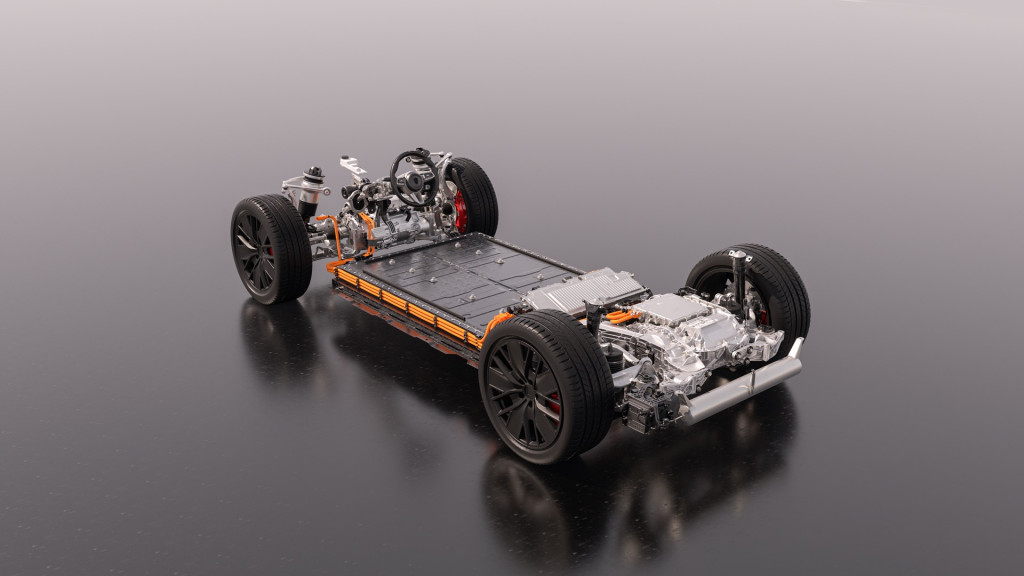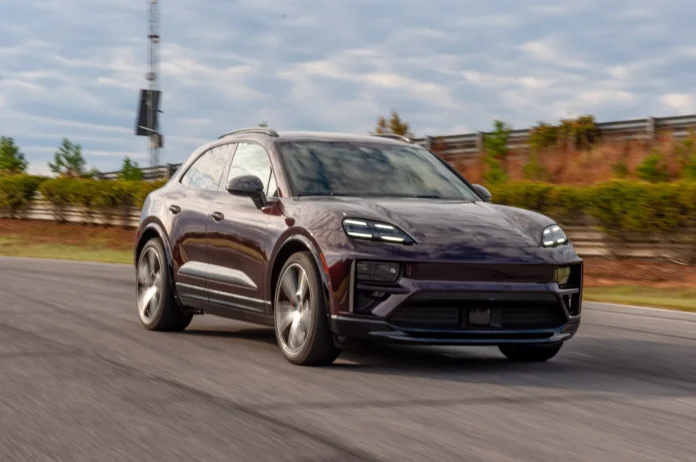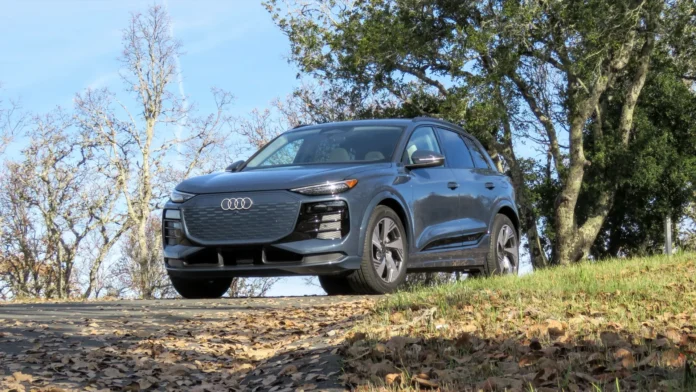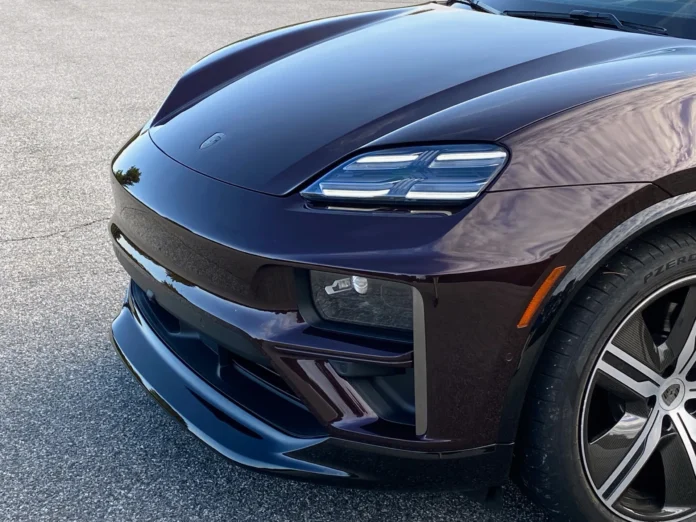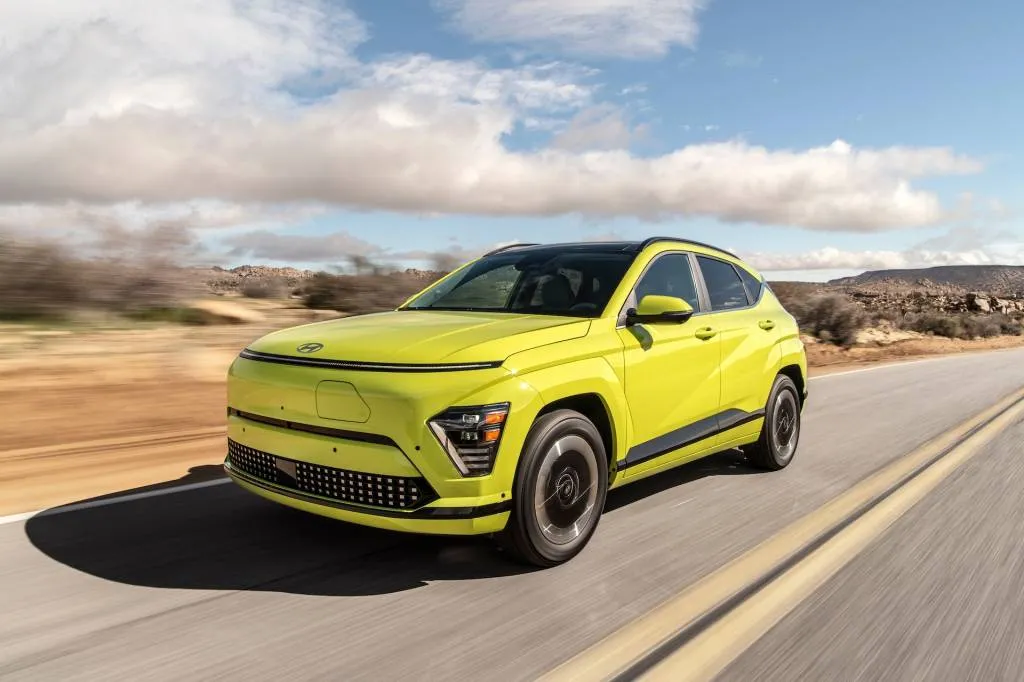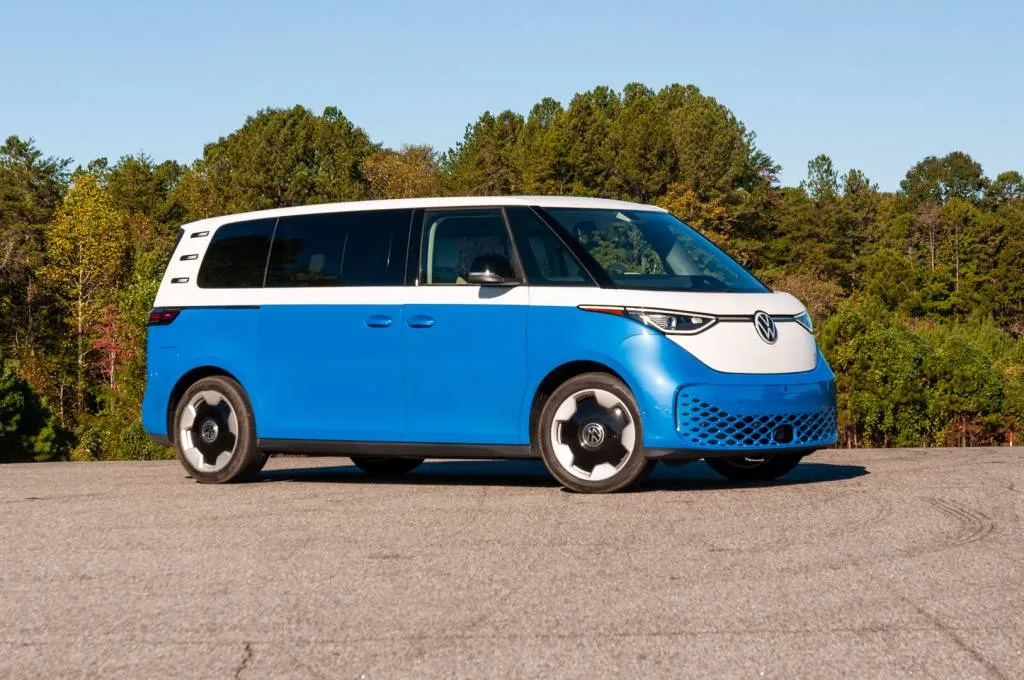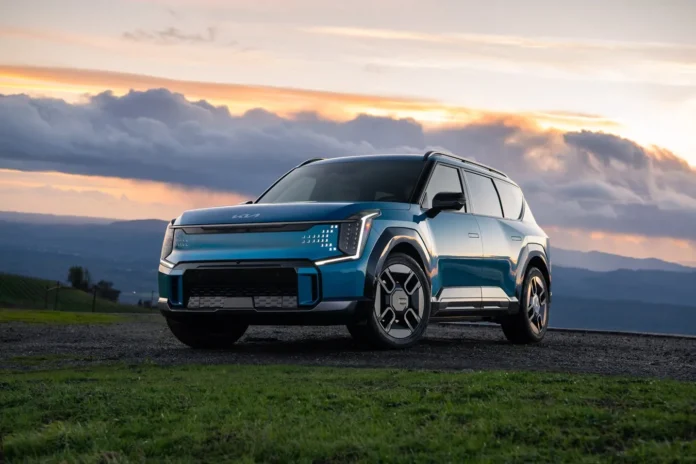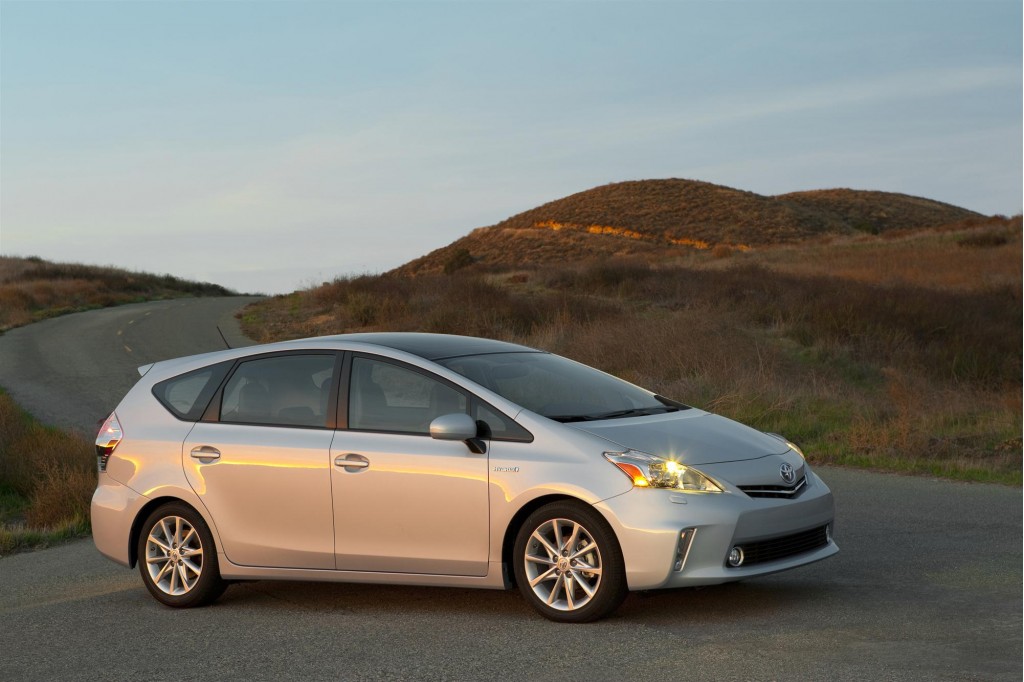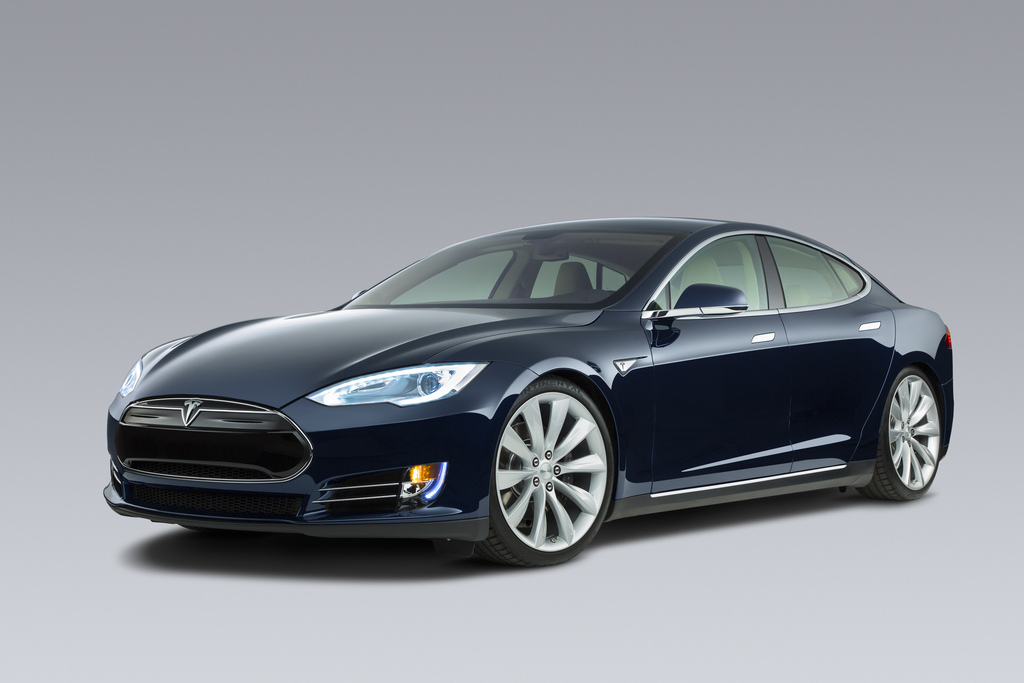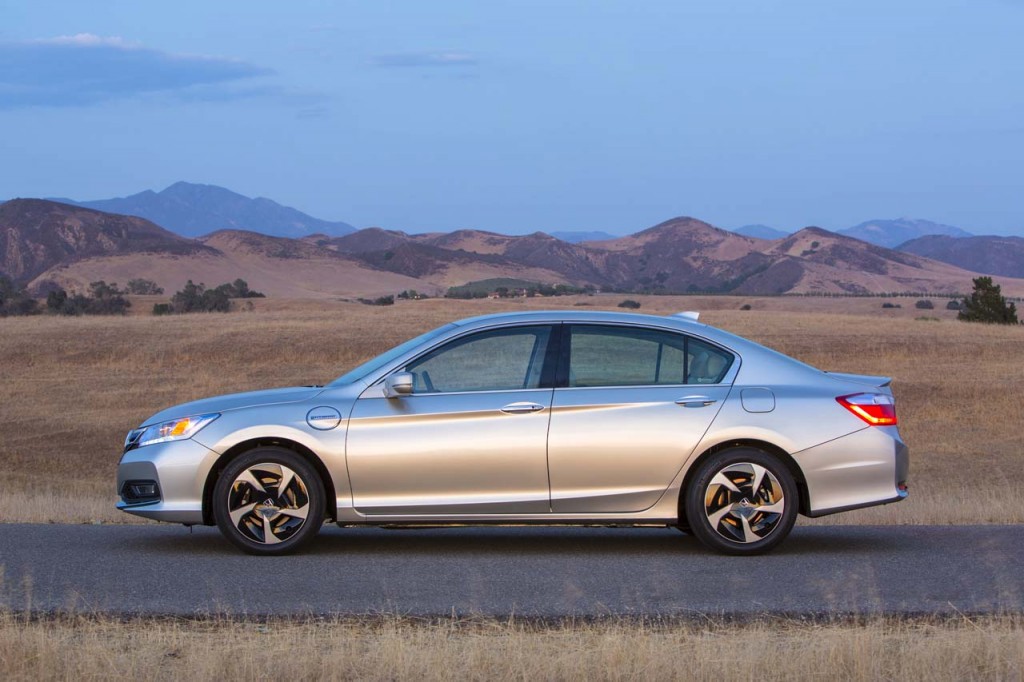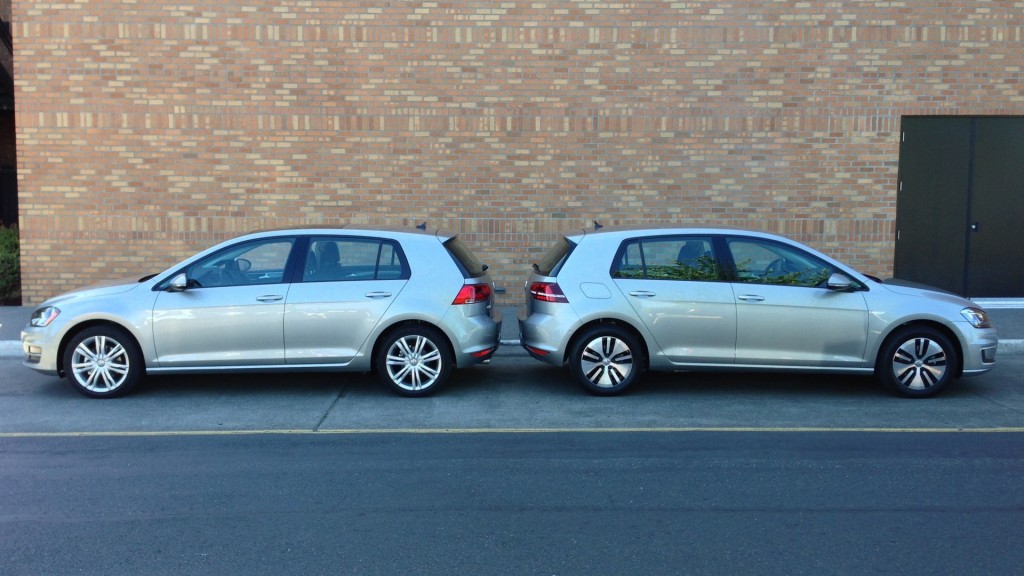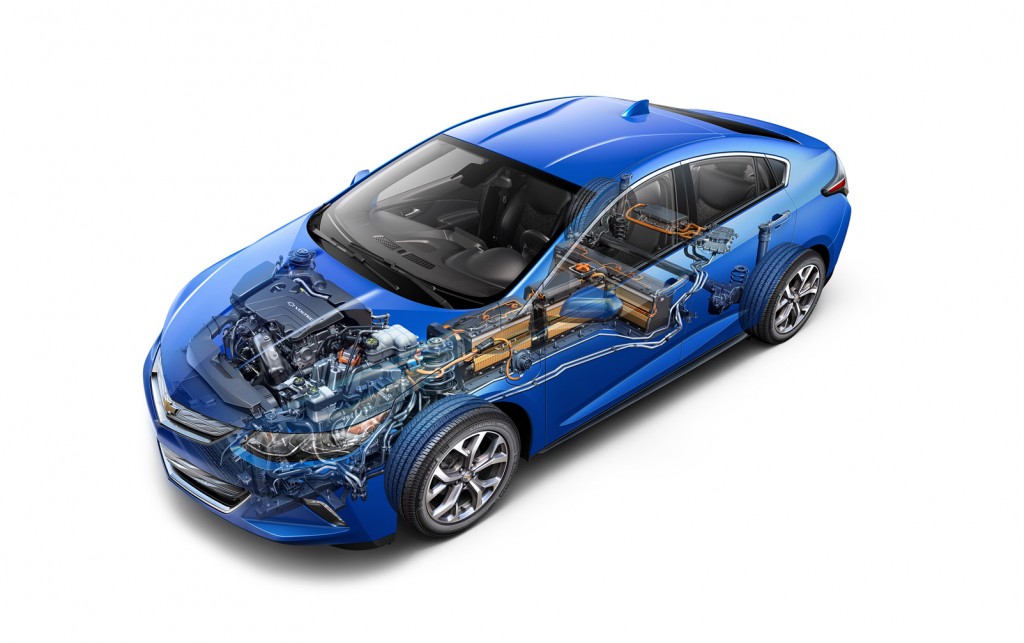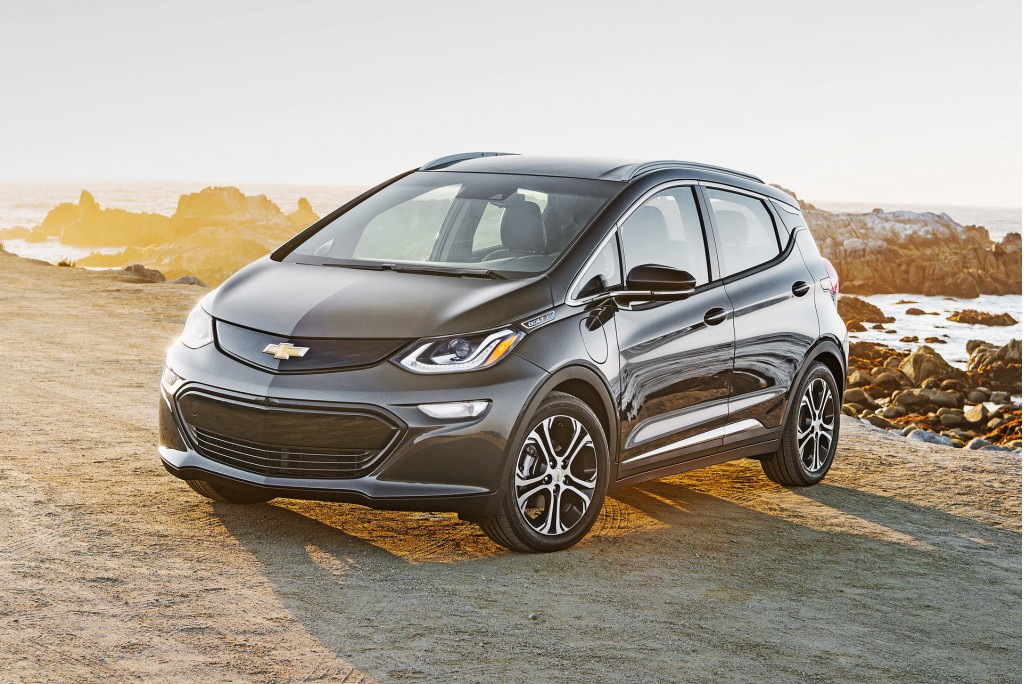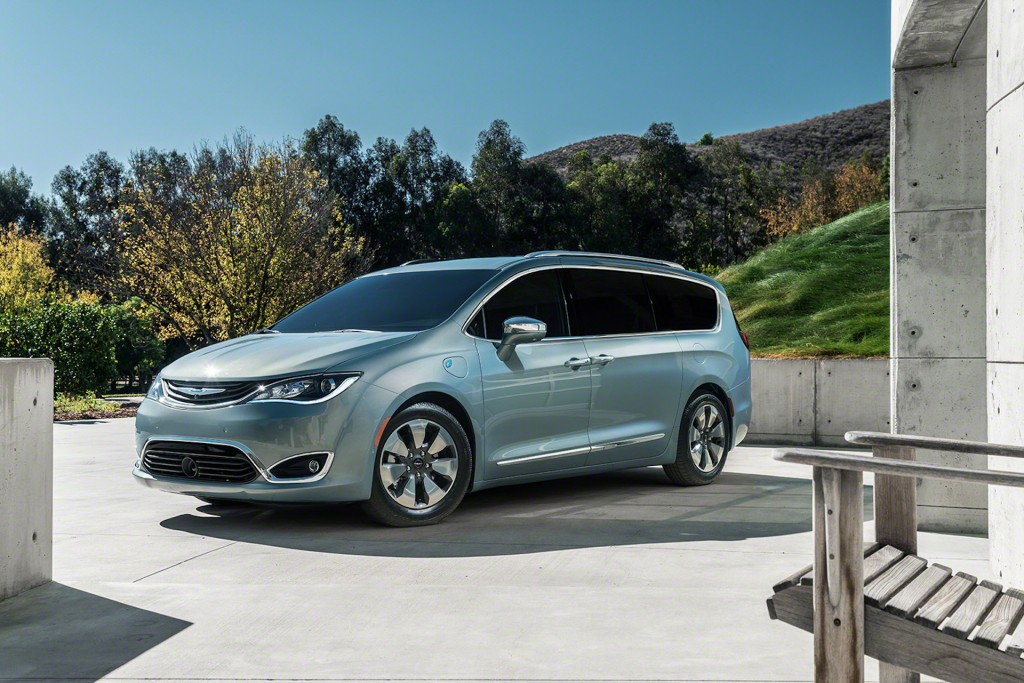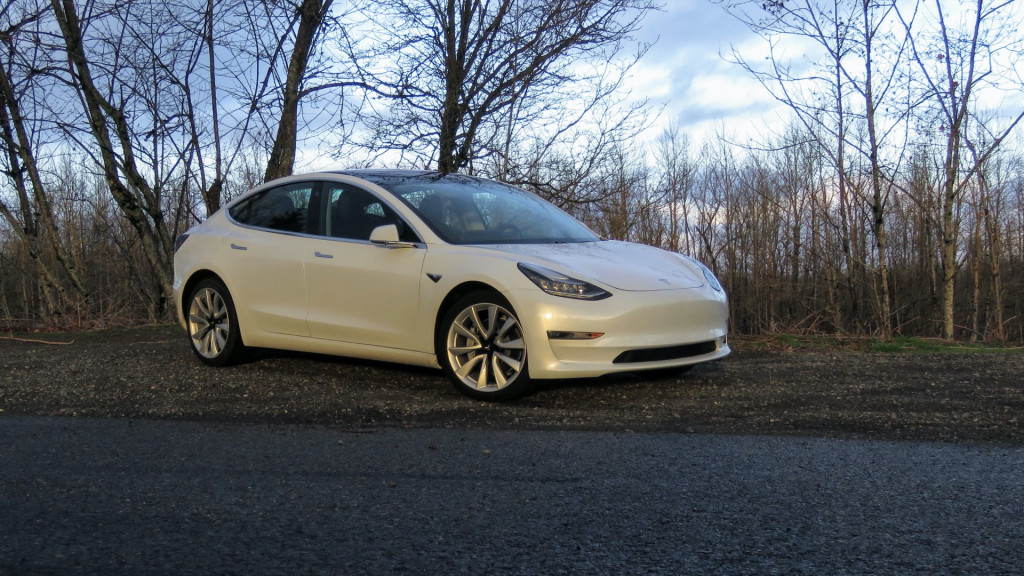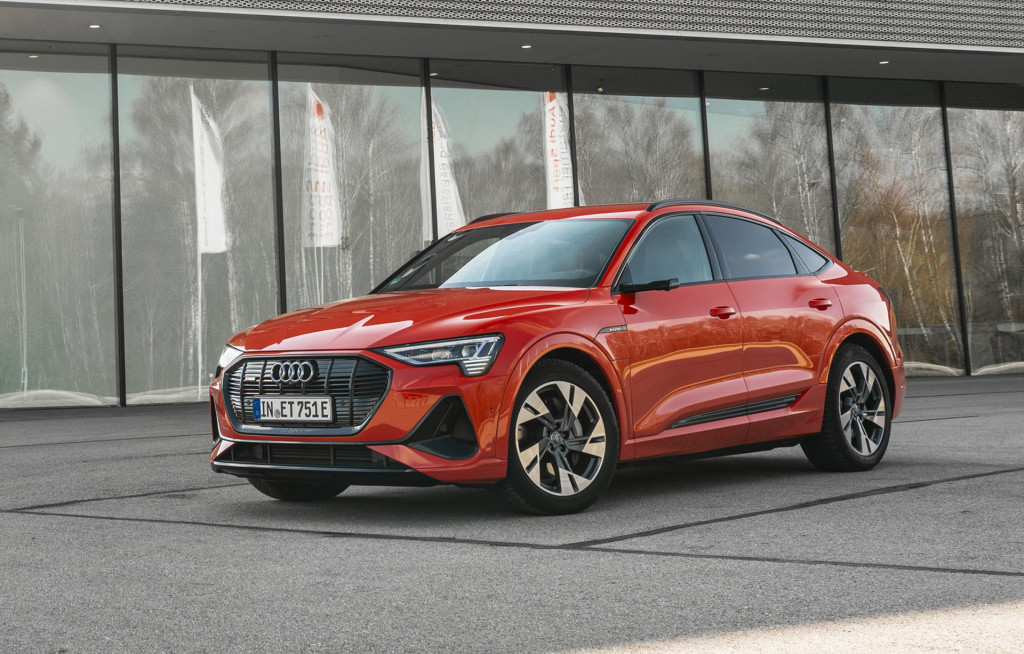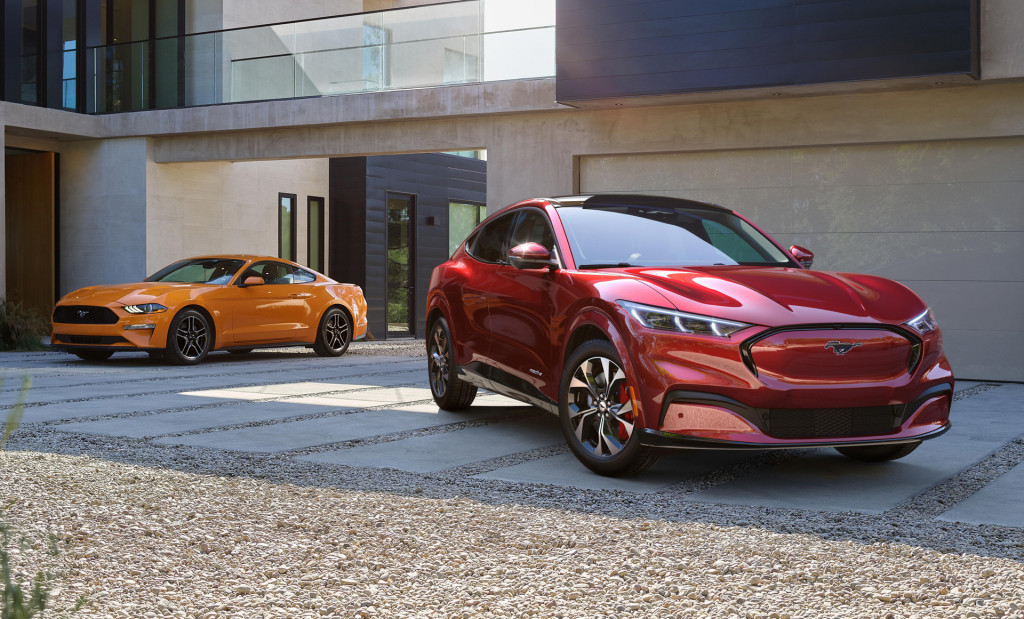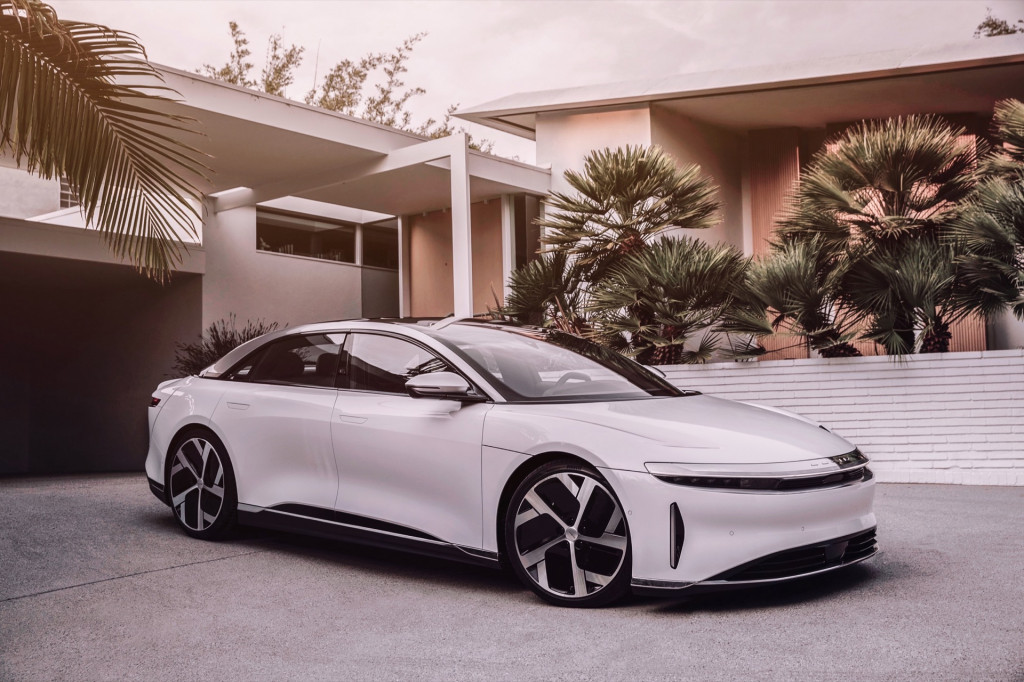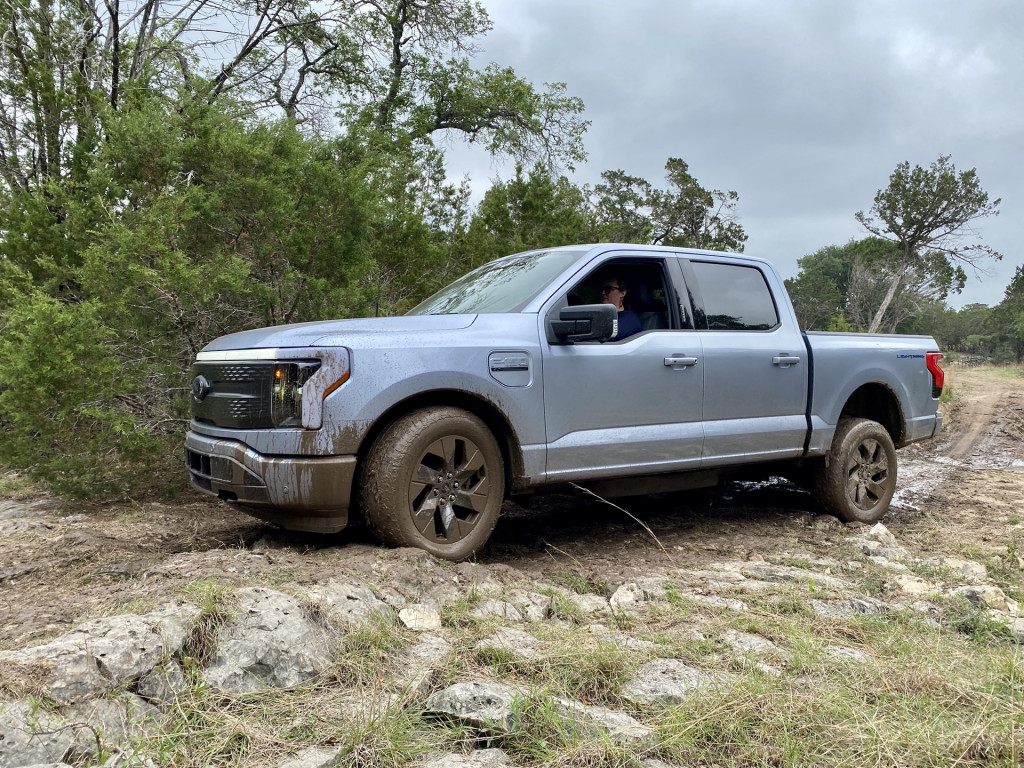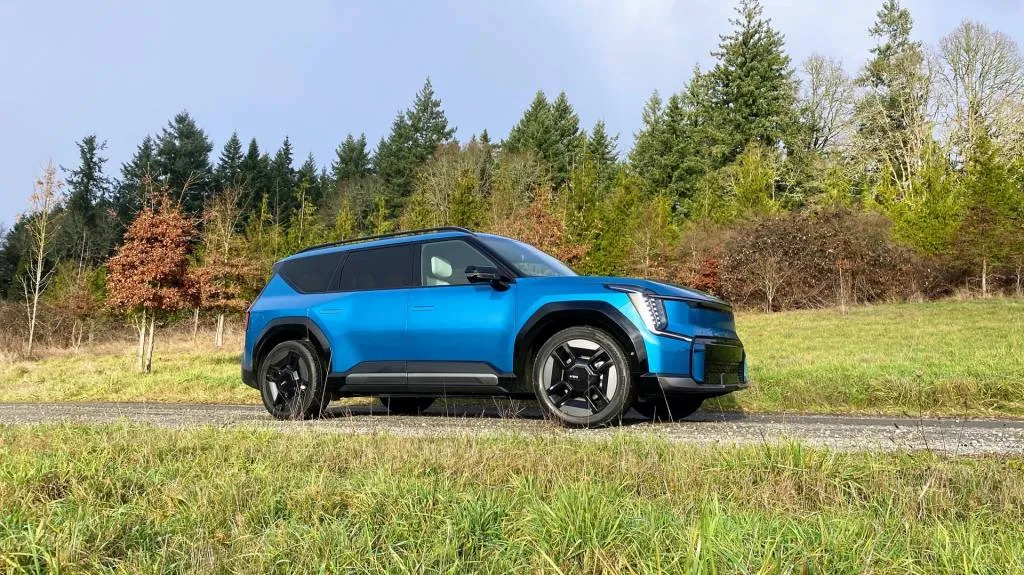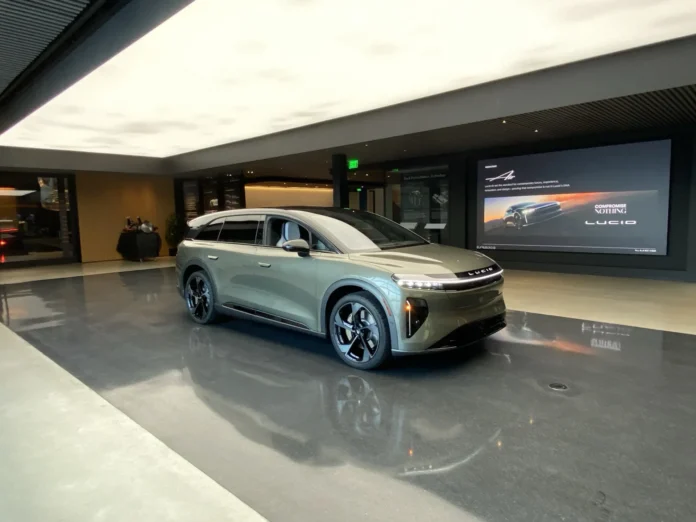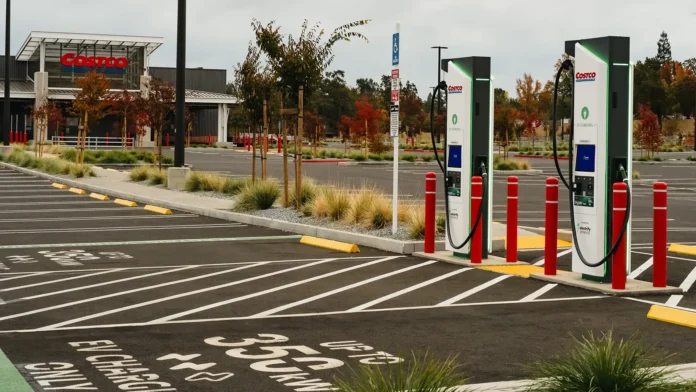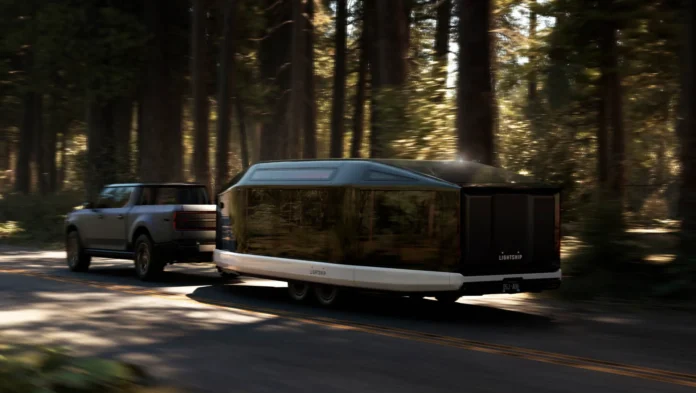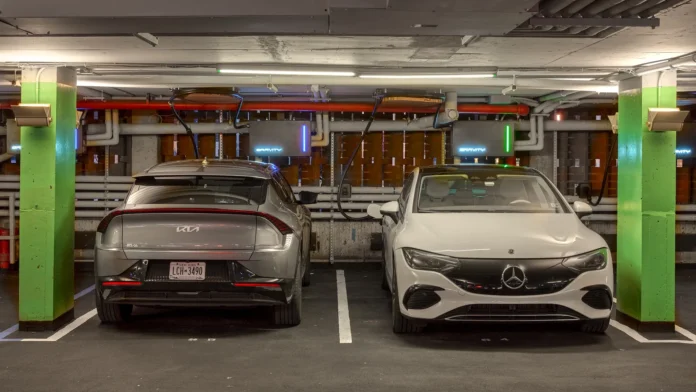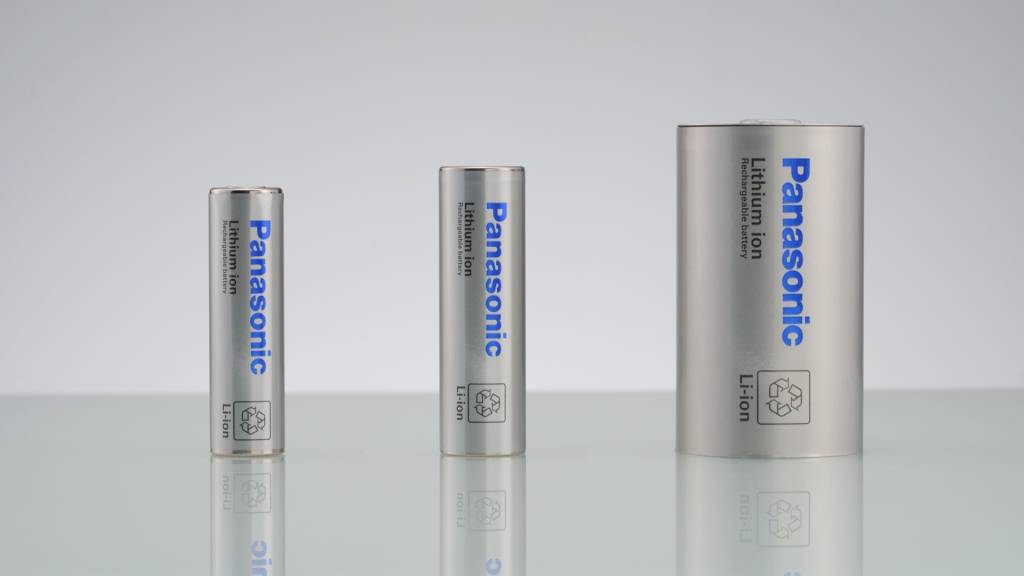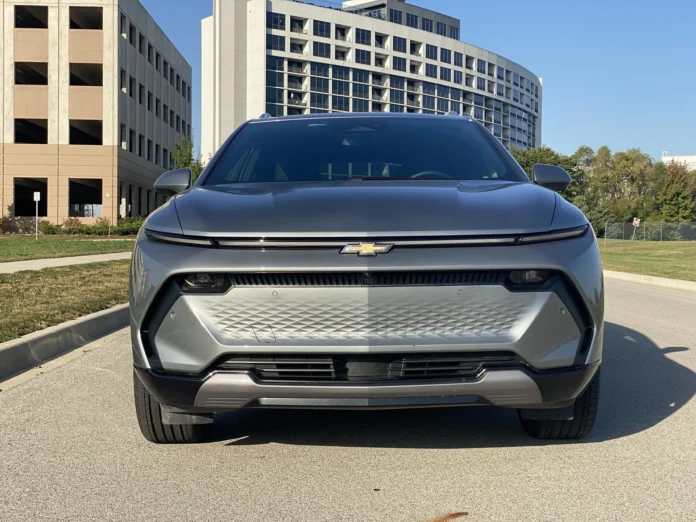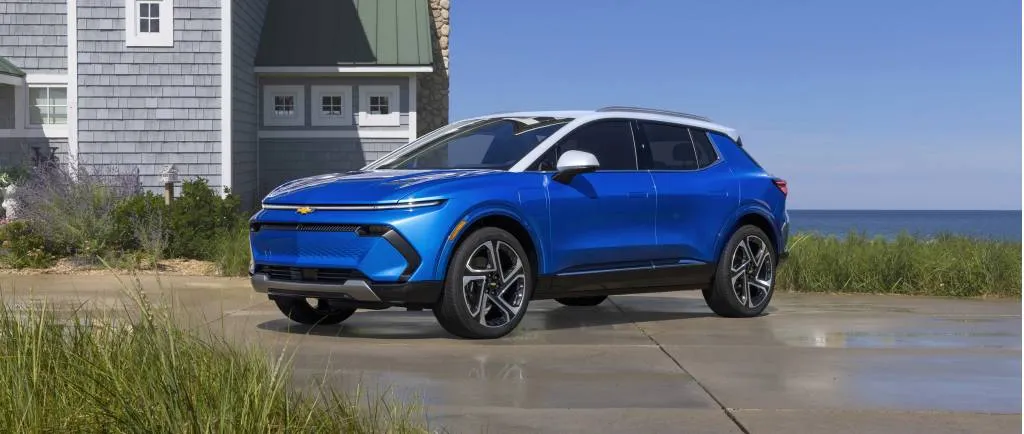- Lucid Gravity follows efficiency approach of Air sedan
- 450 miles of EPA range, 3.4-sec. 0-60 mph, available third row
- Grand Touring arriving soon, Touring coming later in 2025
Something felt amiss as I hustled this prototype 2025 Lucid Gravity around cloverleaf ramps near Lucid’s California Bay Area headquarters last week.
I’d flown around faster than I’d intended to. And yet on the imperfect pavement the Gravity felt like it had so much more to give, with good poise and balance, loads of stability, communication through the steering wheel, and maybe some fun ahead—if, well, this were a closed course.
It’s just that the Gravity is an SUV. And I’ve never, in 25+ years of evaluating vehicles, been in an SUV that drives quite like this. Lucid has somehow managed to dial its dynamics in like a sport sedan—or, perhaps aptly, a sport wagon. My inner g-sensors were reeling and I kept glancing into the rearview mirror—at two more spacious, minivan-like rows behind, which is what got me all turned around and a bit in disbelief.
In a good way, you hear? Based on my speed date, I can already say it’s really, really good.
2025 Lucid Gravity Grand Touring
A breath of fresh Air—for SUVs
Taking a few steps back: If you’ve somehow dismissed Lucid’s very strong opening act, the Lucid Air sedan, the Gravity makes the automaker’s unrelenting focus on efficiency impossible to overlook or ignore.
The Air already presented its case for the numbers it can achieve with its compact and powerful yet efficiency-focused fully electric propulsion suite. Now the Gravity carries all this innovation into a form far more Americans will be likely to consider as their own: a three-row SUV. In this case, it’s one that goes an EPA-rated 450 miles (according to Lucid) with a battery pack that’s relatively modest for the mission—about 118 kwh—and one that can add 200 miles of range in 15 minutes via a 350-kw fast-charge connector (CCS port on early cars, Tesla-style NACS port to come).
The 2025 Lucid Gravity gives in to the reality of the market and its undeniable forces but it does so on Lucid’s own terms. So it should come as no surprise that the Gravity isn’t aiming to play in the world of boxy, nubby-tired bricks named after off-road trails.
“We’re not going to Utah and climbing rocks,” said chief design officer Derek Jenkins. “But to get to the cabin, to do the dirt path, to do medium off-roading, the Gravity is going to be excellent for that type of activity, with the suspension capability.”

2025 Lucid Gravity Grand Touring
Ahead of my drive, Lucid’s chief engineer and senior VP for product Eric Bach reminded me that it’s not developing vehicles for 0-60 mph times. Performance could be on a track, he underscored, or going up a windy mountain road. Or it could be crash-safety performance. Or NVH (noise, vibration, and harshness) performance.
The crew at Lucid by all accounts aren’t dyed-in-the-wool SUV guys. But they’re going to change a lot of minds with this vehicle.
Gravity starts with an efficient shape
Lucid is relentless about efficiency because it puts the brakes on a series of cascading factors. If you use components or a design that together amount to a less-efficient vehicle, it’s then heavier because it needs more batteries to go the distance. It then can’t fit passengers and cargo as well.
To that, the brand made clear to Green Car Reports that it’s proud of how the Gravity isn’t bigger than it needed to be; it stretches 198.2 inches long and it rides on a 119.5-inch wheelbase. Its height of around 65 inches overall (in its lowest setting, we have to assume) makes it lower overall than a Subaru Forester—so yup, no problem fitting into parking garages.
Gravity’s lean profile maps out in all directions except width, where its 78 inches not counting the mirrors is standard for the class. The Gravity has a frontal cross-sectional area, in CdA, that’s much lower than any of its rivals except for the Tesla Model X. It’s said the coefficient of drag will land around 0.24, but with final test numbers not yet out, it could land slightly better than that.
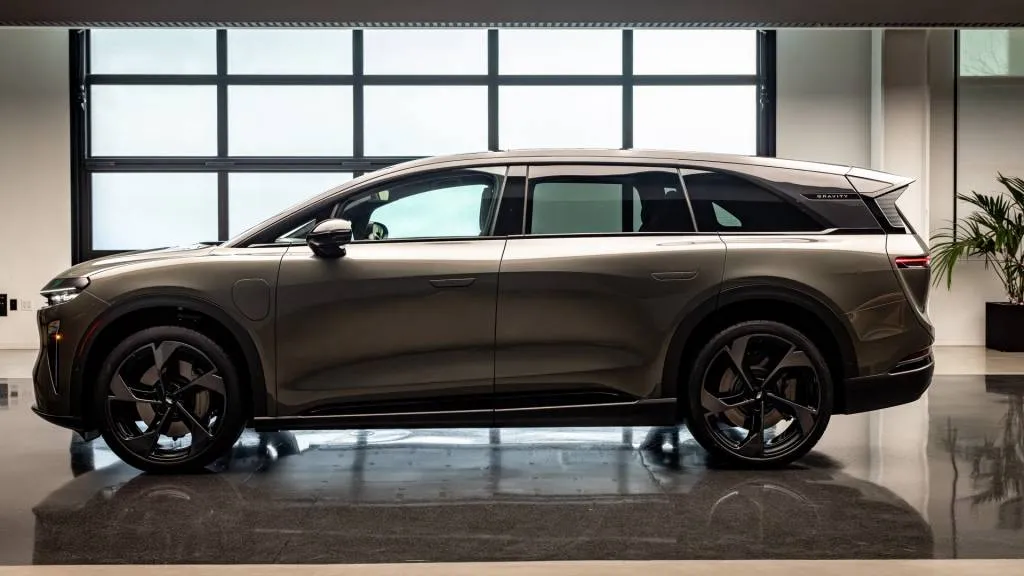
2025 Lucid Gravity Grand Touring
It’s not an Air with a different top hat. Bach emphasized to Green Car Reports that Gravity was conceived as a completely new SUV platform, with a modular set of Air’s existing components arranged to the new architecture. Bach said that’s so that Lucid arrived at “a real off-road-capable as well as luggage- and occupant-optimized package that looks like an SUV.”
Design-wise, Gravity fits right in next to the Air. It has a completely different profile, of course, plus a little more depth to its taillights, while its headlights are a little more vertical—partly to leave room for a wider frunk opening (with optional net at the front).
It’s an attractive profile with a graceful roofline and nice stance. But it doesn’t compare directly to any SUV on the market. As my colleague Joel Feder pointed out in a drive of an earlier Gravity alpha build prototype, this is a model that was shaping up as a bit chameleon-like—straddling the lines between wagon, minivan, and SUV at times.
I don’t disagree. But the Gravity drives like no minivan I’ve ever been in.
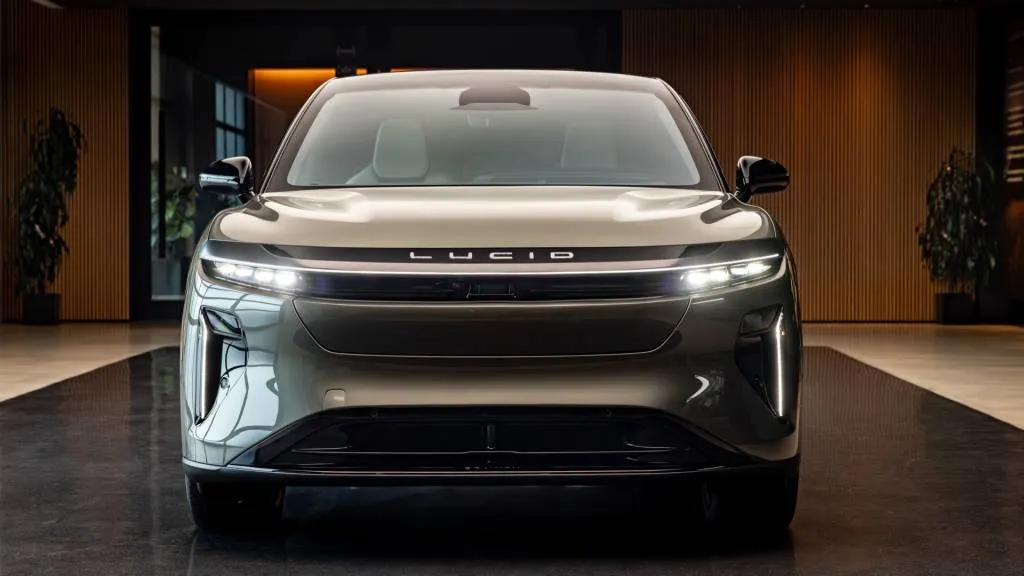
2025 Lucid Gravity Grand Touring

2025 Lucid Gravity Grand Touring

2025 Lucid Gravity Grand Touring
Drives like a Lucid not an SUV: Check
One of the tuning goals was essentially that Gravity “should drive not like an SUV but like a Lucid,” said chassis and dynamics tech specialist John Culliton, who rode along for my drive.
To assure that, the steering rack and the fundamental geometry are carried over from the Air, but the rear suspension, including the air suspension, is new, as is the rear-steer functionality. The front subframe and steering gear are rigidly mounted, to carry as much feedback as possible. But versus Air, the hard points have been moved around to better distribute the load. Every link is new, but massaged the layout to reduce loads into the steering and utilize the same gear.
The Gravity’s body structure is a combination of materials but fundamentally “aluminum rich,” according to Bach, with just 2-4% steel at a few specific points. Lucid has used a megacasting process for body pieces at a few locations.
To make the most of the aero form and the lean, strong propulsion system, all Lucid Gravity models will get a height-adjustable air suspension and continuously adjustable dampers. A series of drive modes dial in different levels of firmness from the dampers, and there are five different ride heights, all mostly selected independently by the driver.

2025 Lucid Gravity Grand Touring
There’s no Auto mode for the multi-mode air suspension, which leaves it up to the user to feel the differences in ride versus responsiveness. Although, as Culliton points out, selecting the Sprint performance mode will drop the Gravity into its lowest ride height. It also makes the behavior of the rear-wheel steering a little more aggressive, the damping firmer, and the torque split more rear-biased.
All these smart decisions allow enough torque for sub-3.5-second 0-60 mph times, and a turning circle of 38 feet—as well as a natural seat height that’s easy to get into and out of.
On a lonely stretch of road, Culliton aims to show off the dual-motor propulsion system, at 828 hp and 909 lb-ft combined, and he has me do a controlled launch, standing on the brake, flooring the accelerator, and releasing, and the Gravity leaps ahead with none of the feeling of lightness in the front end that characterizes fast dashes in other high-power SUVs. The Gravity felt like it lunged forward.
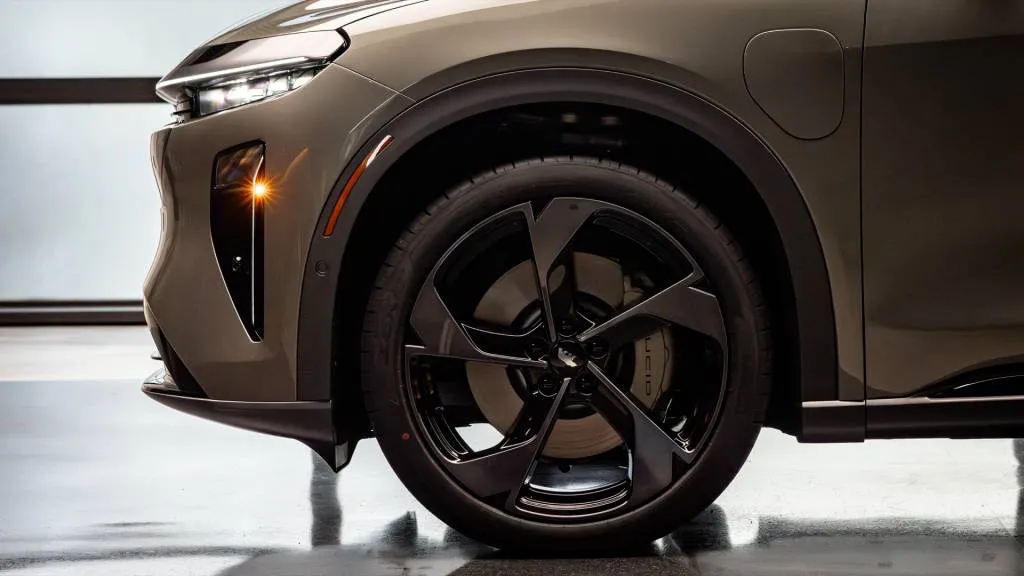
2025 Lucid Gravity Grand Touring
Lucid Gravity is a quiet athlete
With its playful steering feel and muted-yet-communicative demeanor overall, it had some of the same qualities as the Porsche Macan Electric we drove for our Best Car To Buy roundup—about a foot shorter but also with rear-wheel steering.
The Gravity I drove was also fitted with the largest and sportiest wheel and tire combination in the lineup—staggered width 22- and 23-inch Pirelli PZero tires that really seemed to be able to make the most of the Gravity’s available grip at the front wheels. This one feels like it’s going to be a hoot on a closed course, in terms of staying sports-car neutral on grippy surfaces.
Furthermore, ride quality with this combination was great. The Gravity doesn’t float along like some other luxury SUVs; you do feel the road, but never excessively.
Lucid has also soft-mounted the motor to the body to yield more drive-system isolation from the body versus in the Air. Although the surfaces around Lucid’s California offices were hardly a challenge for the Gravity, heading up past normal freeway speeds for a bit didn’t expose anything—a testament to all the tuning of the body and chassis, and to that acoustic glass overhead, perhaps.
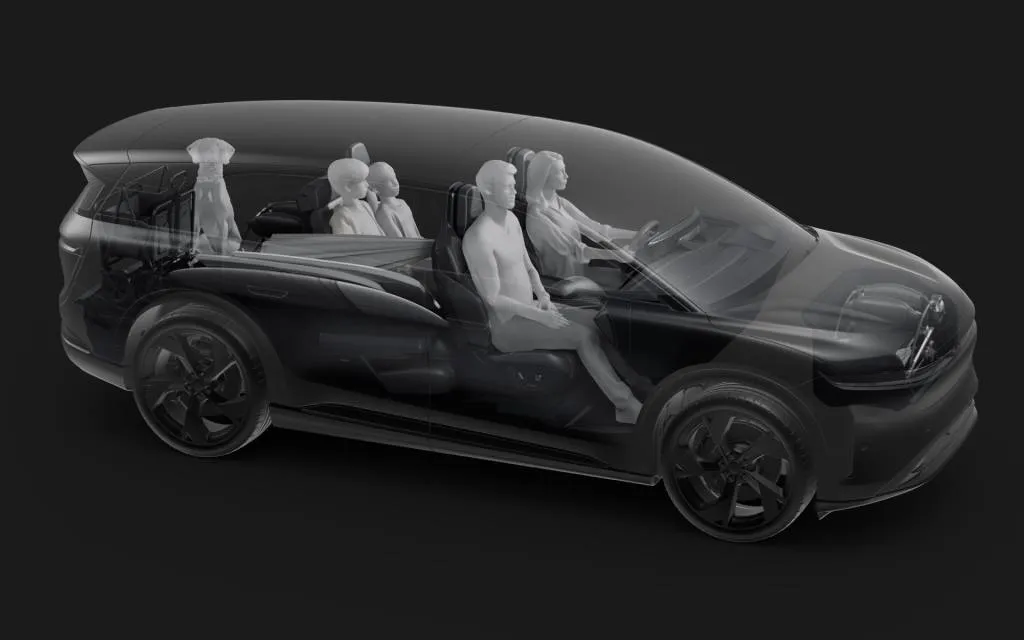
2025 Lucid Gravity Grand Touring

2025 Lucid Gravity Grand Touring
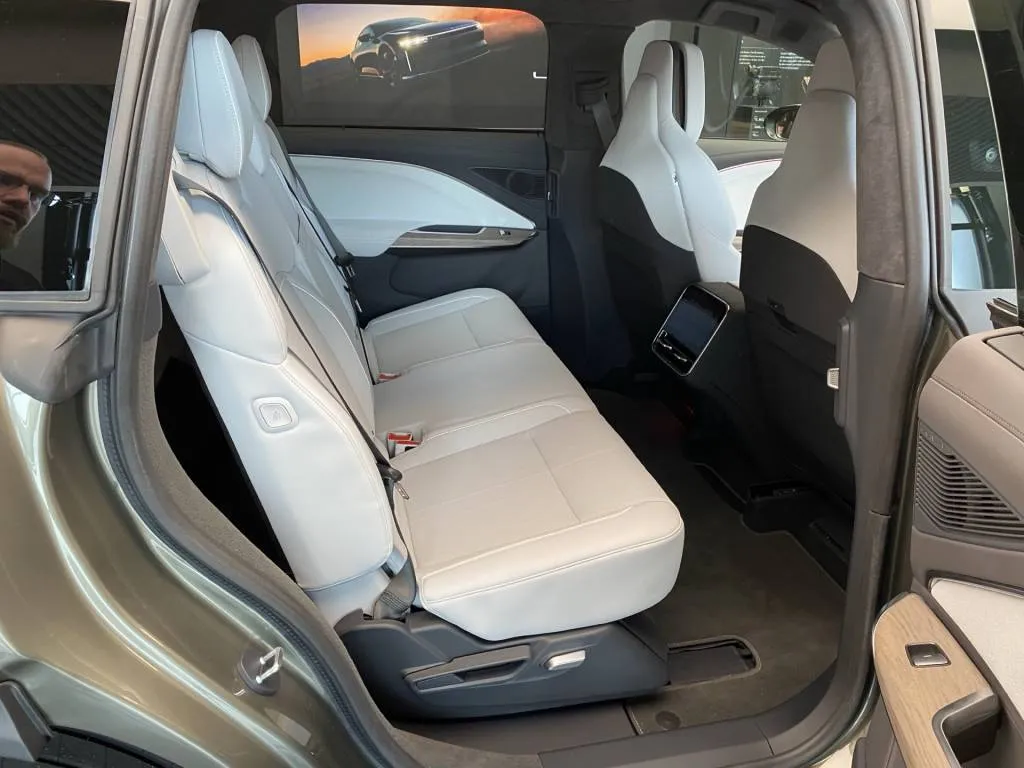
2025 Lucid Gravity Grand Touring
Space efficiency for seven and stuff
The cabin feels bright and airy, allowed partly by the vast expanse of glass overhead. The glass is acoustic, and structural, and flows continuously in two runs—one from the base of the windshield through to just over and behind those in the front seat. Then a second run goes from there all the way over the third row. It’s the only three-row SUV I can recall with the blue sky overhead, so uninterrupted.
What strikes me most as I first as I walk up to the vehicle is how low the passenger cabin floor is, while the bottom of the vehicle isn’t especially low. According to a source, the air suspension spans from about 135 to 235 mm (5.3 to 9.3 inches) of ride height—meaning in its lowest setting, it’s essentially the same ride height as Air.
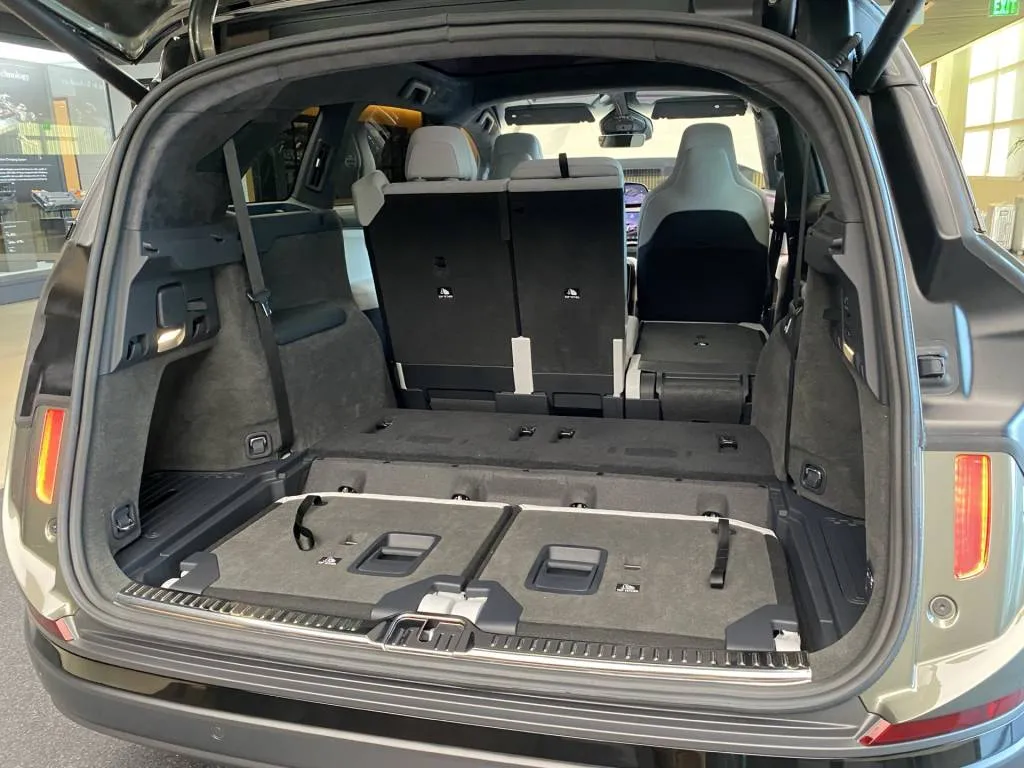
2025 Lucid Gravity Grand Touring
Just like the Air Grand Touring, the Gravity Grand Touring has 22 battery modules, with four of them “upstairs” on a second layer. In the Air, that’s under the rear seat, but in the Gravity it’s been pushed to the area under the front seats, so as to allow a continuous cargo floor, with the seats folded, of more than eight feet.
Including the frunk’s additional space, the Gravity has 120.6 cubic feet of cargo volume with the second and third rows folded—40% more than the Mercedes-Benz EQS SUV, Lucid boasts, and about 15% more than the Rivian R1S, which also has a frunk.
As Bach put it, “you need such a ginormous truck to get to some of the attributes that we can pack into this small Gravity space concept,” pointing to the Chevy Suburban and its huge body-on-frame counterparts.
Lucid hasn’t said much about the Gravity’s off-road ability yet, other than that there will be some. Its Terrain mode will take advantage of the stability system in the high-performance Lucid Air Sapphire. That system, capable of reading inputs from all four wheels 1,000 times per second, can handle the braking portion of the traction control in Gravity at that rate, albeit not for each rear wheel separately. That helps assure peak regenerative braking, which still arrives in standard and high settings when you lift off the accelerator, saving the brake pedal specifically for the brake pads.

2025 Lucid Gravity Grand Touring

2025 Lucid Gravity Grand Touring

2025 Lucid Gravity Grand Touring
Gravity back seat: Tables not screens
I’m 6-foot-6 and can truly sit directly behind two of myself, reasonably comfortably, in the Gravity.
The way the third-row floor stays flat, and the way the seats swing around into a well at the back of the vehicle. Bach says that the team made a lot of decisions throughout the engineering process not to compromise any of that space. For instance, it split its active rear steer actuators in half, while it could have gone with a combined unit that would have compromised third-row legroom.
The third row is optional for $2,900, but it only adds about 130 pounds to the Gravity’s curb weight (yet undisclosed). The team behind the Gravity see this as a road trip vehicle, with the second row good for eating, playing games, and watching things on devices. So they opted for a pair of sturdy utility tables, in place of a native entertainment system for the rear.
What the Gravity ended up with is a solution that might be right out of a first-class air cabin.

2025 Lucid Gravity Grand Touring
“We talked to customers, we talked to business people, we talked to families, and everyone said just give me a table for food, for laptops, for the kids’ iPad, charging, and make sure it’s easy to stow. “I’m super-proud of this, because it was a big push to make this happen and not sacrifice second-row space and do something robust and solid,” said Jenkins.
A 90-degree-opening rear door also allows easier loading of kids into child seats, took some extra level of engineering to make sure the latches were strong, and the doors have a special low safety cinch helps bolster side protection when the impact is just above the lower sill.
Counterintuitively, Lucid was able to put its H-point for the third row higher up than in the Suburban, allowing more relaxed leg angles. You won’t be looking only at your knees.
Jenkins also noted that Lucid has also thought much more about the robustness and cleanability of all the materials It’s offering four different themes for the Gravity: Tahoe and Ojai are leather, while Yosemite and Mojave are non-leather.
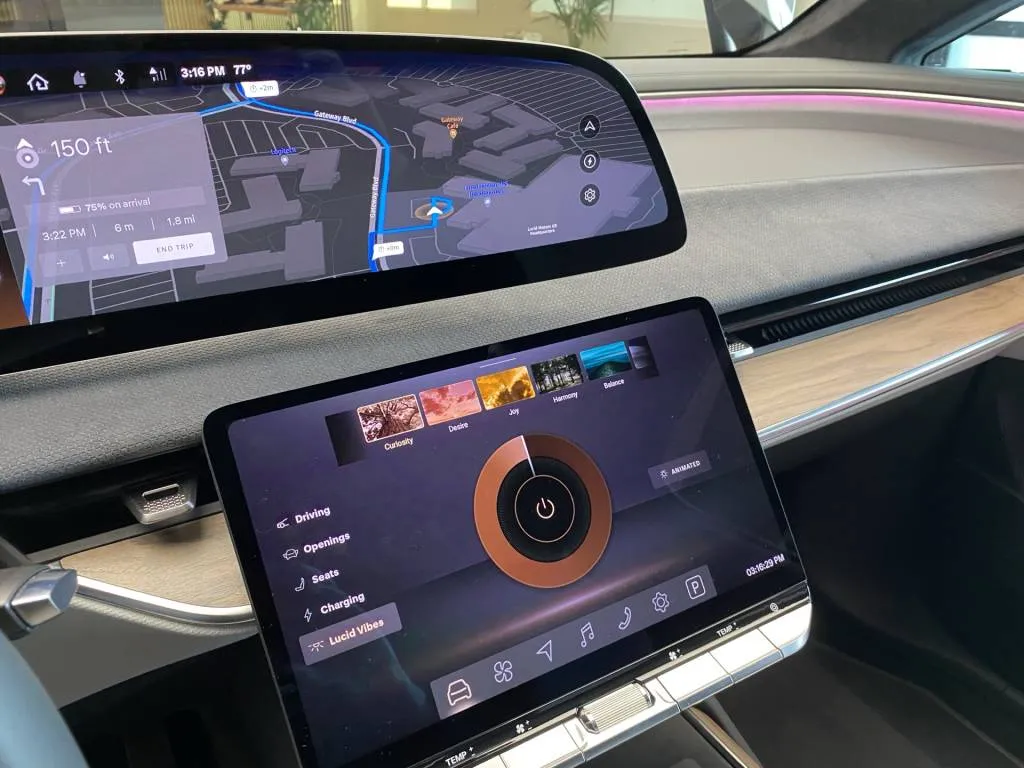
2025 Lucid Gravity Grand Touring

2025 Lucid Gravity Grand Touring

2025 Lucid Gravity Grand Touring
Gravity interface: Landscape, swipes, and vibes
Inside, the Gravity doesn’t entirely trade in what Lucid has established as an interface, but it reworks it. The instrument panel is even slimmer, with updated vents for better heating and cooling and a larger center console. Fundamentally, new hardware offers a full OLED display side to side with no interruptions and better contrast
Maybe most notable of all, the steering wheel has been replaced by a “squircle,” and based on the quick drive my hands felt natural at 9 and 3 in tight corners and in high-speed cruising.
There are new mood-and-ambience modes called Vibes. It’s taken a close look at what it’s including in the augmented-reality head-up display to make sure it’s not adding to clutter, and the touchscreen has moved to a landscape format, with new thumb controls that offer a swipe function good for dismissing alerts plus a tactile thumb switch for menu selection. In the new layout, menus always open to the right
As of my drive, some of the interface points still stood out as works in progress, as it aimed to quell some switchgear and menu-latency issues.

2025 Lucid Gravity Grand Touring
Luxury in price, but more affordable later
So far Lucid has only said that the Gravity Grand Touring will start at $96,550 (including $1,650 destination) and include the larger battery pack and dual-motor all-wheel drive, with initial deliveries set to start late this year. The $81,550 Touring model, coming in late 2025, will have a smaller pack, and officials say it’s fair at this point to assume that offerings will parallel those of the Air Touring—which gets a smaller 84-kwh pack. Do the math and in the Gravity that would still mean well over 300 miles of range from the small battery.
Loaded up with options, the Gravity is well into luxury territory. The Dynamic Handling Package adds the rear-wheel steer system, triple-rate air suspension, and painted brake calipers. And a $2,500 Comfort and Convenience package brings power rear sunshades, soft-close doors, a heated steering wheel, heated wipers, heated second-row seats. Two different levels of Lucid’s DreamDrive assisted-driving and active-safety features are also optional, for up to $6,750. And the $750 towing package brings a tow rating of up to 6,000.
Add the works, including $2,900 Surreal Sound Pro audio and the biggest (22/23-inch) wheels, and the grand total amounts to $117,400 for a fully loaded Grand Touring, not including other cosmetic upgrades.

2025 Lucid Gravity Grand Touring
My drive, while it left a very good first impression, was a very quick take in a well-fettled prototype with company handlers. I didn’t get to head off pavement, and I noticed a few different quirks in the switchgear and touchscreen interface that, in all hopes, Lucid will have fixed by the time the first vehicles are delivered. Arizona production of the Lucid Gravity started last week.
There are so many reasons to love this vehicle, and it’s surely one of the year’s greats. But what it amounts to is this: If you need an SUV, but you’d rather be in a sport sedan, this is your leading edge.
